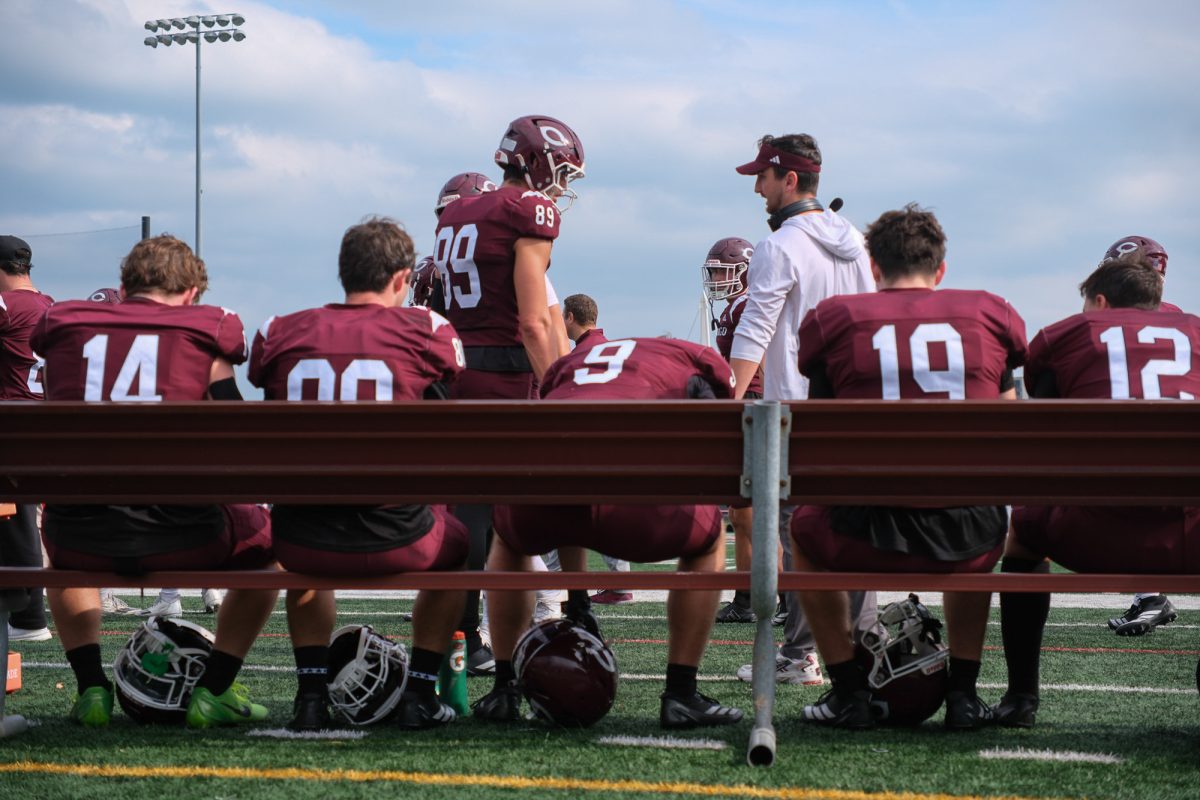[img id=”78414″ align=”alignleft”]
379 teams compete in D-III women’s tennis. 48 teams qualify in the NCAA tournament. Eight teams advance to the quarterfinals. One team raises the trophy at the end.
Emory head coach Amy Bryant—who helped her team to its first national title as a player in 1996 and added four more as a coach from 2003 to 2006—was able to distill the feeling down to just one word: “Justification.”
“Here’s what we worked for; this is why we did everything that we did; this is how good we knew we could be,” she said, describing the feeling.
In six days, one of the eight teams remaining in the tournament will hoist the trophy, and the Maroons hope that next Thursday will be their justification.
The Maroons came within six points of the trophy last season, when they lost a 5–4 match to Amherst in the national semifinals, eventually settling for fourth place. The taste was bitter, but the goal for the next season became clear.
“I said to [former assistant coach Jeff White] it’s going to feel really good walking in that first day and saying this is our goal, and you really mean it,” head coach Marty Perry said.
The Maroons have looked like a championship contender all season, finishing second at the ITA Indoor Championships and winning both the Midwest Invitational and the UAA Championship.
The NCAA title, however, is a different piece of hardware. To reach the trophy, the third-ranked Maroons will have to navigate through a crowded field. Amherst, Williams, and Emory round out the top four this season, and none is a stranger to the big dance. In the past nine years, there has been just one champion not named Williams or Emory. Williams has won the last two years, as well as 2001 and 2002, while Emory won four straight titles from 2003 to 2006. Amherst won the trophy in 1999 and has appeared in the national finals three times in the past six seasons.
While the names at the top of D-III tennis have stayed the same over the last decade, Bryant said the level of competition has elevated.
“The level of competition has gotten better—there are more strong players interested in Division-III tennis,” she said. “It’s exciting. The great thing about it is the level of doubles has really improved, so that’s exciting. When it’s good tennis, it’s good clean fun.”
Fun, second-year Kendra Higgins said, but also high-pressure. The crowds are larger, the fans are louder, and the faces are rarely not painted.
“A lot of people think tennis is a quiet game,” Higgins said, “but once you get to this stage, the atmosphere gets very lively.”
Chicago will square off against seventh-ranked Pomona-Pitzer (16–3) Tuesday, and while the triumvirate of former champions from Amherst, Williams, and Emory will be a tempting target from the outset of the tournament, the Maroons are doing their best to keep their eyes on the match in front of them.
“We don’t want to overlook anyone,” second-year Jennifer Kung said. “We know we’re ranked higher, but we don’t want to let our guard down because if we lose, that’s the end of it, and we don’t want that to happen.”
In fact, all eight teams in the quarterfinals are returning from last season, meaning an experienced and balanced field. With talent across the board, Perry said that intangibles will decide the difference between first place and fourth place.
“I believe it’s all attitude,” he said. “We’re going to have to do what it takes, face the fear of losing and get over it, pull together as a team, focus from the beginning of the match to the end of the match, have no fear, and don’t worry about consequences, don’t worry about losing….
“We just need a good day. We need three good days.”
And if the Maroons can will themselves to win all three matches next week?
“We would all be speechless; a couple of us would be crying. I have no clue,” Higgins said. “You can ask me that question, hopefully, after we win it.”








